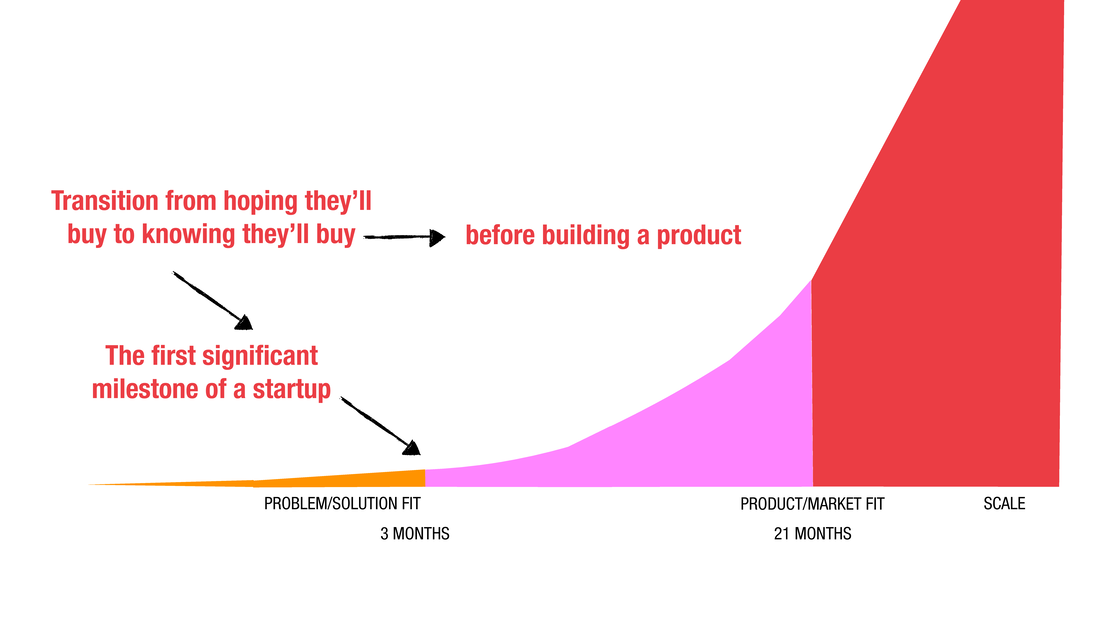|
A great reminder from Ash Maurya and the rest of the LeanStack team! It takes time to build up your business fundamentals, no two ways about it. More so in the innovation space than anywhere else. Finding Problem-Solution Fit and Product-Market Fit 🔗 is a drawn out validation process. And it helps to carry out this validation 𝐖𝐈𝐓𝐇𝐎𝐔𝐓 building a product/coding for as long as possible! This cost-effectiveness compounds over time, as the needs of your product shift when trying to find the right customer segment that buys 𝐄𝐍𝐎𝐔𝐆𝐇 of your solution to send you into growth mode. Unfortunately, not all customer types are made equal in this regard. You'll have to double down on the right folks (customer segment). But first, you'll have to find them 👀 More on how to maximise the use of prototypes for this in our next post, and its difference to the highly enthused 'Minimum Viable Product'. Have you had any success with testing the market without an actual product? 𝐈𝐟 𝐲𝐨𝐮'𝐯𝐞 𝐞𝐧𝐣𝐨𝐲𝐞𝐝 𝐭𝐡𝐢𝐬 𝐩𝐢𝐞𝐜𝐞 𝐨𝐟 𝐜𝐨𝐧𝐭𝐞𝐧𝐭, 𝐥𝐞𝐚𝐯𝐞 𝐮𝐬 𝐚 𝐜𝐨𝐦𝐦𝐞𝐧𝐭, 𝐬𝐡𝐚𝐫𝐞 𝐭𝐡𝐢𝐬 𝐩𝐢𝐞𝐜𝐞, 𝐨𝐫 𝐬𝐮𝐛𝐬𝐜𝐫𝐢𝐛𝐞 𝐭𝐨 𝐨𝐮𝐫 𝐑𝐒𝐒 𝐟𝐞𝐞𝐝! 𝐏𝐥𝐞𝐚𝐬𝐞 𝐠𝐢𝐯𝐞 𝐮𝐬 𝐚 𝐟𝐨𝐥𝐥𝐨𝐰 𝐨𝐧 𝐬𝐨𝐜𝐢𝐚𝐥 𝐦𝐞𝐝𝐢𝐚 @ 𝐄𝐄 𝐃𝐢𝐠𝐢𝐭𝐚𝐥 𝐂𝐚𝐩𝐢𝐭𝐚𝐥
0 Comments
We've been asked a lot about the best times to raise funds and what investors look for 💰 And very related to this, are the 3 core 'fits' that a new technology company has to meet, before becoming a thriving, profitable business. Plenty of young companies make good inroads when it comes to determining the first stage of Problem-Solution fit, but struggle at the second stage. Product-Market fit 🧩 In fact, many companies fail because they don't reach 'PMF' within their runway. But what does it actually mean? It means to have a proposition product or service that very much meets the needs of a specific and narrowed customer segment. This customer segment should be pinpointed in terms of their sector, industry, job roles, responsibilities, pains faced, and other 'stuff' they're trying to get done. Paying attention to the latter bits, we want to solve the very human-centric challenges faced by the personas in that customer segment. Two key points to this. Product-Market fit is found when: 👉There is consistent demand forming with that customer segment. i.e. you see the same level of engagement and appetite from other customers that match the analysis of the chosen customer segment 👉That customer segment is paying for the solution, even if it's a prototype/MVP and not a full product release. This is the ultimate indicator. But if they are not paying for the prototype, you should have very strong evidence they'd be willing to pay for it. With enough of these two points as evidence, you'll have a much better vantage point of raising seed money, and even graduating to growth money. But we'll save the conversation on growth and the third stage of Business-Model fit for next time. What has your experience been with trying to reach Product-Market fit? 𝐈𝐟 𝐲𝐨𝐮'𝐯𝐞 𝐞𝐧𝐣𝐨𝐲𝐞𝐝 𝐭𝐡𝐢𝐬 𝐩𝐢𝐞𝐜𝐞 𝐨𝐟 𝐜𝐨𝐧𝐭𝐞𝐧𝐭, 𝐥𝐞𝐚𝐯𝐞 𝐮𝐬 𝐚 𝐜𝐨𝐦𝐦𝐞𝐧𝐭, 𝐬𝐡𝐚𝐫𝐞 𝐭𝐡𝐢𝐬 𝐩𝐢𝐞𝐜𝐞, 𝐨𝐫 𝐬𝐮𝐛𝐬𝐜𝐫𝐢𝐛𝐞 𝐭𝐨 𝐨𝐮𝐫 𝐑𝐒𝐒 𝐟𝐞𝐞𝐝! 𝐏𝐥𝐞𝐚𝐬𝐞 𝐠𝐢𝐯𝐞 𝐮𝐬 𝐚 𝐟𝐨𝐥𝐥𝐨𝐰 𝐨𝐧 𝐬𝐨𝐜𝐢𝐚𝐥 𝐦𝐞𝐝𝐢𝐚 @ 𝐄𝐄 𝐃𝐢𝐠𝐢𝐭𝐚𝐥 𝐂𝐚𝐩𝐢𝐭𝐚𝐥 |
ArticlesUseful content to navigate the landscapes of innovation and disruption Archives
July 2024
Categories
All
|


 RSS Feed
RSS Feed